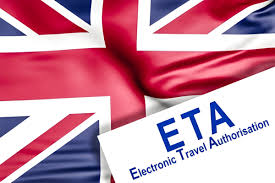Bridging the Gap: Examining the UK-US Data Bridge

London: In today’s digital world, the transfer of personal data across borders is a fundamental necessity for businesses, governments, and organisations.
Whether it’s a tech company managing user data, a healthcare provider offering remote services, or a financial institution conducting international transactions, the ability to share information securely and seamlessly between countries has never been more important.
However, as the flow of data increases, so too do the challenges of maintaining privacy, security, and regulatory compliance. This has been particularly evident in the relationship between the UK and the US, two of the world’s leading economies with deep trading ties.
Yet to keep the flow of businesses operating between the two countries, the governments of both nations struck an agreement to share data through what is dubbed the Data Bridge. But what exactly is the Data Bridge, why was it created, and how does it work in practice?
Historically, data transfers between the UK and the US were governed by a series of frameworks that evolved over time, most notably the EU-US Privacy Shield. The Privacy Shield aimed to make it easier for US companies to receive personal data from EU (and by extension, the UK as it was still in the EU) organisations.
However, concerns over US government surveillance led to the European Court of Justice (ECJ) invalidating the Privacy Shield in 2020, plunging transatlantic data flows into uncertainty.
In the absence of the Privacy Shield, organisations had to rely on alternative mechanisms like Standard Contractual Clauses (SCCs) or Binding Corporate Rules (BCRs). However, these were often cumbersome and required detailed impact assessments to ensure that US laws would not undermine UK data protection standards.
Businesses on both sides of the Atlantic needed a simpler, more efficient system. The EU and US eventually agreed on a new data transfer framework, EU-US Data Privacy Framework, in July 2023, but with the UK having left the EU already, a new agreement between it and the US had to be struck.
The UK-US Data Bridge was therefore introduced, coming into effect on 12 October 2023. This simplifies and aligns the data transfer process with UK standards, bringing much-needed clarity and legal certainty to transatlantic exchanges.
In the case of the UK-US Data Bridge, this mechanism allows for personal data to be shared from the UK to organisations in the US that are part of the Data Privacy Framework (DPF).
The Data Bridge operates as an extension of the US’s DPF. For UK organisations, it means they can transfer personal data to US companies that are certified under the DPF and have opted into the UK extension.
This arrangement eliminates the need for organisations to create additional legal safeguards, such as conducting transfer impact assessments.
However, not all data is treated equally under the framework. Certain types of data, such as biometric data or genetic data, may need to be flagged as “sensitive” by the data exporter, depending on UK GDPR definitions.
This is an important consideration for organisations that handle such data, as it highlights the ongoing importance of compliance with UK-specific regulations within the broader framework.
The UAE’s Ministry of Energy and Infrastructure (MoEI) recently introduced a data bridge to connect various government entities and streamline data sharing. The MoEI’s Data Bridge allows for real-time document exchange and significantly reduces the number of documents required for transactions, improving efficiency across sectors.
The UK-US Data Bridge, while focused on personal data transfers, offers similar potential for transforming cross-border data exchanges by simplifying legal frameworks and reducing administrative hurdles.
Despite its numerous benefits, the UK-US Data Bridge is not without challenges. Critics have raised concerns over whether the Data Bridge provides sufficient data privacy protection, particularly given the history of surveillance concerns that led to the invalidation of the Privacy Shield.
As data transfers become more streamlined, organisations must ensure that robust cybersecurity measures are in place to protect against potential threats. Balancing ease of data sharing with security and privacy will be a key ongoing challenge.
Furthermore, the compatibility of the Data Bridge with existing regulations like the UK GDPR is crucial for ensuring that organisations can navigate both UK and US legal landscapes. This requires close attention to detail from businesses, particularly those that handle sensitive data.
The EU-US equivalent to the data bridge, the Data Privacy Framework, highlights how just because you abide by the rules does not mean you are safe. Meta has been fined a record €1.2bn (US$1.3bn) and ordered to suspend the transfer of user data from the EU to the US over concerns that European users’ data is not sufficiently protected from US intelligence agencies when it is transferred across the Atlantic. Equally, Uber has been hit with a record-breaking €290m (US$323m) fine for alleged violations of the General Data Protection Regulation (GDPR) regarding the transfer of personal data from the EU to the US.
For companies looking to take advantage of the UK-US Data Bridge, the implementation process involves certifying compliance with the DPF and the UK extension.
In the US, the Department of Commerce oversees certification, which involves demonstrating adherence to privacy principles, such as data security and transparency. Businesses must annually recertify to remain compliant, and failure to do so can result in removal from the certified list, making it impossible to continue benefiting from the streamlined process.
Practical steps for companies include updating compliance documentation to reflect the new transfer mechanisms, ensuring contractual protections with third parties, and incorporating the UK-US Data Bridge into their privacy notices and data processing records.
This process should be seen as part of a broader data protection strategy that aligns with GDPR requirements, ensuring businesses can respond to any future changes in the regulatory landscape.
The UK-US Data Bridge represents a significant milestone in the ongoing evolution of transatlantic data sharing.
By replacing the outdated and cumbersome systems of the past, it simplifies the legal framework for businesses, reduces compliance costs, and offers enhanced data security.
However, the success of the Data Bridge depends on the ability of organisations and governments to maintain the right balance between efficient data sharing and the safeguarding of privacy rights.
In this way, the UK-US Data Bridge is not only a step forward but also a reminder of the continuous need for vigilance in the complex world of international data transfers.





